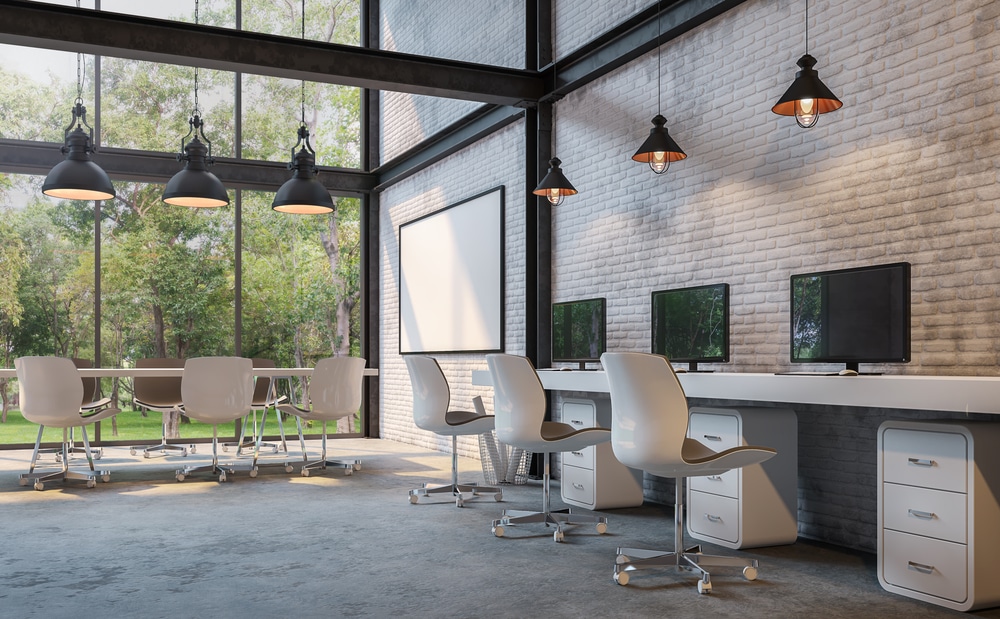Steel in Interior Design: Design Styles, Elements, Furniture
April 10, 2024 | Categorized in: Applications

Used for centuries as a practical construction material, steel has become a popular choice for interior decorating in recent years. Versatile, hygienic, and cost-effective, steel adds a splash of style with the reliability of modern architectural support. Let’s get into why steel is being used more for interior design and how you can implement this material in your upcoming project.
Why use steel for interior design?
Aesthetically, using steel for interior design may conjure up images of rustic lofts or industrial warehouses. But despite its cool appearance, steel offers several compelling benefits that make it a worthwhile option.
Durability & strength
Steel is known for its exceptional strength and durability, making it an ideal material for almost any indoor application. Unlike other materials, steel can withstand heavy usage and resist wear and tear, ensuring that the design elements retain their original beauty for a long time (which can also save you more money in the long run).
Easy to clean
Steel is incredibly easy to clean, requiring only a simple wipe to remove dirt, dust, or spills to maintain that well-known finish. This makes steel an excellent choice for areas prone to frequent use and exposure to messes, such as high-traffic commercial spaces that you want to keep low maintenance.
Minimalist
Steel’s sleek and contemporary appearance fits in perfectly with current minimalistic design trends. Whether incorporated as structural elements or as decorative accents, steel’s clean lines, metallic finish, and cool tones contribute to a modern setting, creating an atmosphere of simplicity and elegance.
Environmentally friendly
You can feel good about using steel because it’s highly recyclable and can help reduce the demand for new raw materials such as wood or clay. Additionally, steel’s durability and long lifespan minimize waste and the need for regular replacements. By choosing steel for interior design, you can make an effort towards eco-conscious living without sacrificing style.
Complements other materials
One of the strengths of steel is its ability to complement a wide range of materials. Wood, glass, concrete, fabric — steel effortlessly enhances the visual appeal of other elements for a more sophisticated look. This versatility opens up countless design possibilities, allowing for seamless integration into various styles, from industrial to contemporary and even traditional design types.
Surprisingly flexible
Structural steel, such as tubing, sheets, beams, and plates, can be molded, cambered, or bent into various shapes and sizes to suit different design and reinforcement needs. Its malleability enables the creation of one-of-a-kind, customized pieces, ensuring that each interior design project stands out with distinct character.
How steel can be used in interior design
The ways in which steel can be used are as diverse and varied as its characteristics. Here are a few examples of how you can incorporate structural steel into any interior design.
Furniture
Whether it’s a sleek dining table or an industrial-inspired bookshelf, structural steel can be used as the primary material or in combination with other elements to craft furniture that seamlessly integrates into any design style. Available in a range of shapes and styles, steel beams, tubes, channels, and angles make it easy to create steel office furniture, lounge seating, bar stools, and more.
Staircases, railings, & elevators
There’s a reason why many commercial buildings often use modern steel stair railings, steel staircases, and elevators — these highly used features require dependable architectural integrity. Structural steel provides the necessary strength and stability to support these elements while maintaining a visually appealing aesthetic.
Exposed structural elements
For those seeking an industrial or loft-style look, exposed structural elements can be a captivating design feature. Structural steel beams, columns, and trusses can be left exposed to create a raw and urban setting. This design choice not only adds a unique architectural touch but also showcases the strength and durability of steel as a key element in the overall design scheme.
Shelving
Steel tubing or channels can be used to create open steel shelving or wall-mounted units that provide both functionality and visual interest. The sleek and clean lines of steel shelving effortlessly blend with various design styles, making it a versatile choice for both residential and commercial spaces.
Countertops
Ever wondered why commercial kitchens rely on steel? That’s because it’s resistant to stains, heat, and bacteria growth, which helps maintain cleanliness. Steel sheets and plates can be used to craft steel countertops to add a touch of sophistication while reducing cleanup time during busy shifts.
Wall panels
Structural steel plates and sheets can be used as wall panels to create striking focal points within interior spaces. These interior steel wall panels can be customized to feature intricate patterns or textures, adding depth and eye-catching character to any room. Whether used as a decorative accent or a bold statement, steel wall panels add more personality to any space.
Structural steel for a variety of large-scale projects
From furniture to architectural elements like staircases and exposed structural features, steel brings strength, elegance, and versatility to interior spaces. If you’re looking to incorporate steel into your design projects, Service Steel Warehouse offers a massive inventory of premium quality carbon steel beams, tubing, and other products that can meet your specific needs. Our team of industry experts can help you transform your indoor design plans into a final product that exceeds expectations. Request a quote or call our team today to get started.